There have been so many words written about the expanse of genre here at io9, and 2023 was a wildcard of a year for entertainment (including Marvel Studios, Star Wars, DC Studios, and Max), theme parks, and games. We covered a lot of ground, from union-strong solidarity during the WGA and SAG-AFTRA strikes to creatively discussing our love for pop culture while highlighting the voices that make it happen.
Here are our favorite staff picks for stories and coverage we had the privilege to bring you this year.
Dungeons & Dragons’ New License Tightens Its Grip on Competition
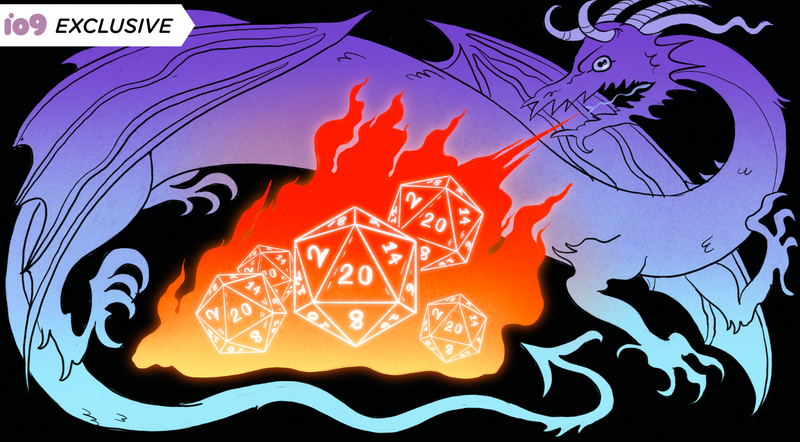
By Linda Codega
The new Dungeons & Dragons Open Gaming License, a document which allows a vast group of independent publishers to use the basic game rules created by D&D owner Wizards of the Coast, significantly restricts the kind of content allowed and requires anyone making money under the license to report their products to Wizards of the Coast directly, according to an analysis of a leaked draft of the document, dated mid-December.
Despite reassurances from Wizards of the Coast last month, the original OGL will become an “unauthorized” agreement, and it appears no new content will be permitted to be created under the original license.
[Read More]
Spirited Away: Live on Stage Has Its Own Magical Story
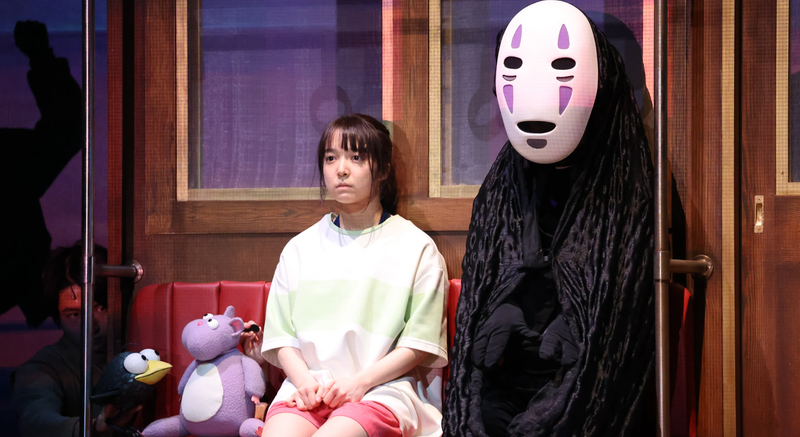
By Rob Bricken
Watching the stage play adaptation of Hayao Miyazaki’s Academy Award-winning, animated masterpiece Spirited Away is a surreal experience. The Studio Ghibli film gets brought to life (literally!) through bunraku puppetry, incredible sets, and astounding practical effects, creating an incredibly faithful adaptation that’s simultaneously original. Also amazing: it was written and directed by John Caird, one of England’s most acclaimed playwrights. With recorded performances about to hit U.S. theaters beginning this weekend, we spoke to Caird about this seemingly impossible task of bringing Spirited Away to the stage.
Rob Bricken, io9: What’s your history with the original movie?
John Caird: I just loved it when it first came out. My wife is Japanese, and we have three half-Japanese children and so I’ve been steeped in Japanese anime culture for a very long time. And when Spirited Away came out, I was just astounded by it. I thought it was not just the best animated movie I’d ever seen, it was one of the best movies I’d ever seen. It’s such a great work of art, so I’d always admired it and it never occurred to me to try to make a theater piece out of it. That came much later, but I’ve always thought it was beautiful. I’ve seen it countless times.
io9: When did the idea of adapting it as a play occur to you, and what gave you the idea?
Caird: It was 2018—something like that—and I was searching for new ideas to put into the Imperial Theater in Tokyo which is a very big space that Toho owns and they’re always looking for big projects to go in it. And I was thinking, you know, what’s the next big musical going to be? And then I thought, well, what about doing a big play in that? That, and suddenly it occurred to me, you know, usually I’d been doing big Western stuff in there and I thought, let’s do something Japanese. What could we do that’s a really, authentically Japanese story? And then I thought, well, the great storyteller is Miyazaki. So which one of his movies would do it? And as I trawled through them, I thought, well, there’s only one really that will work in the theater and that was where the choice came.
[Read more]
Star Wars Is Getting Its Own Peloton Ride
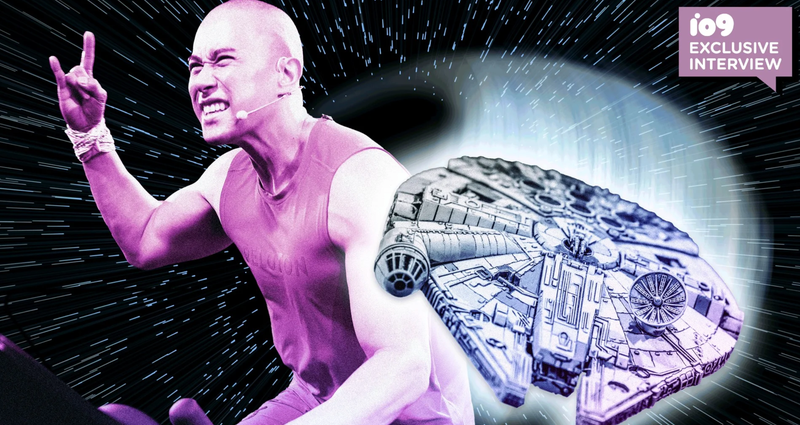
By Germain Lussier
Next month, your Peloton bike is going to take you to a galaxy far, far away. On May 4, the popular fitness brand will release its first-ever Star Wars ride to members everywhere. It’s 30 minutes of fitness set exclusively to the music of iconic composer John Williams and, as anyone who uses Peloton can probably guess, the ride will be led by instructor Sam Yo.
“When we go to a movie, it takes us on a journey,” Yo told io9 at the Peloton Studios in London. “And when you’re in a fitness class, it’s the same thing. You’re going physically on a journey. So I’m adding the layers of those together to give you this immersive experience. And that’s what I love to do.”
Yo is a lifelong Star Wars fan and, six months into his time at Peloton, he first floated the idea of a Star Wars ride. It didn’t take then but a few years later, when putting together a ride for Halloween, he tried something else. “I wanted to put ‘Duel of the Fates’ in somewhere,” he said, referring to Williams’ powerful piece from the end of The Phantom Menace. “With the strings and the choir, the image I get is those doors opening and Darth Maul just standing there. It gives you those chills. So I thought, ‘That’s going in my Halloween ride.’ I didn’t know what the rest of the playlist was going to be, but this is going to be the end and then I’ll just work my way back from that.”
[Read more]
Disney vs. Florida Governor Ron DeSantis’ Ongoing Lawsuit

Coverage by Sabina Graves
Here’s a breakdown of the articles that chronicle the Walt Disney Company’s Walt Disney World smackdown with Governor DeSantis.
Disney’s Bob Iger Thinks Disney Movies Got Worse Under Other Disney Bob
Bob Iger most recently shared while speaking at DealBook, and was quoted by Deadline, “the company, while I was gone, decided to take a position against the Don’t Say Gay bill that was moving through the Florida Legislature. I won’t comment about what I would have done or not done, but the company took that position against it. The governor got very, very angry at the company when it took that position and decided to punish the company by basically stripping its rights to a special district around Disney World that had been in place for decades”
He continued. “The question wasn’t even about the [bill, later law]. It was about does a company have a right to free speech. And if it exercises its right to free speech, it should not face retribution.” The situation has devolved into a petty back and forth battle, with DeSantis in particular embarrassing himself while harming his own state’s economy. Since returning to Disney, Iger said he’s expressed interest in speaking to DeSantis—but the interest doesn’t seem to flow both ways. “I offered at some point through intermediaries, the ability to have a conversation with him, but he did not take me up on that offer.”
Read more:
Disney Shifts Focus on DeSantis Lawsuit to First Amendment Violation
Here’s a Breakdown of the Ongoing Disney Vs. DeSantis Battle—and the Latest Updates
Florida Gov. DeSantis Challenges Disney for Immunity From Lawsuit
A Guide to Disney’s Messy Legal Battle With Florida’s DeSantis
Walt Disney Company Cancels Imagineering Move to Florida
Disney’s Bob Iger Asks Florida If It Wants More Mouse Money or Not
Florida Governor Strips Disney of Special District Control
Chucky’s Don Mancini on Season 3’s White House Frights
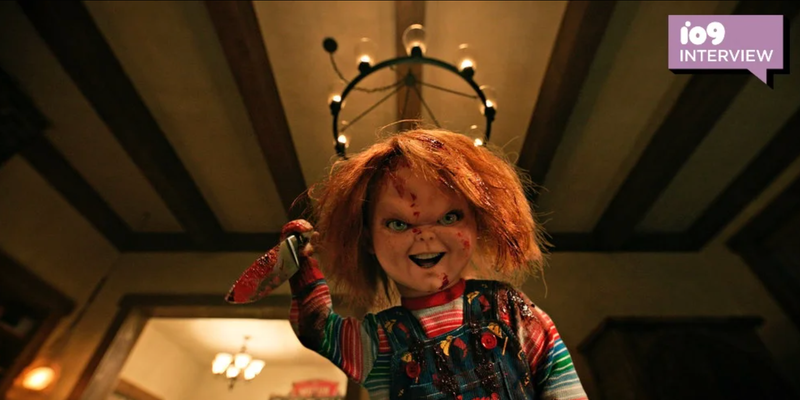
By Cheryl Eddy
Chucky wraps up the first half of its third season tonight before going on hiatus until next year—but the episode, cheekily titled “Halloween III: Season of the Witch,” offers a perfect end point. io9 got a chance to talk to Chucky’s creator, Don Mancini, to learn more about season three’s themes and what’s to come.
Cheryl Eddy, io9: What inspired the Washington, DC setting? Was it intended to capitalize on election anxieties or was there something more going on?
Don Mancini: Well, it was partly that—in the sense that the White House in our culture now is a source of anxiety. I think regardless of where you are on the [political] spectrum, we’re dealing with unprecedented political anxiety in public life. So we knew that just putting Chucky into that was potentially interesting. But I’ve actually been very interested in haunted White House lore for a long time and done some research on it; even separate from Chucky, it was just something I’d been really interested in. I love ghost stories and haunted house stories, and I thought the White House [has] such interesting potential for one that hasn’t really been dealt with much. When it came time to find a new realm for Chucky, I felt like, “Well, why don’t we can just do it with [this season of the show]?” It also has the virtue of challenging our teenage lead characters, because after having dealt with Chucky for two years now, they’re of the subset of Chucky franchise characters who know the truth about Chucky. They know what he’s all about… and they know that they want to kill him.
So putting him in the White House, which is the most secure house in the world, that gives these characters a unique challenge … it’s not the same as like, “Oh, let’s just go down the street and crawl in the back door.” It’s a lot harder. They have come up with a plan. You get a taste of this in episode three during the montage when they’re making their costumes—which the payoff [for] comes in the episode this week. We thought of it almost as like an Ocean’s 11 type of situation where it’s this methodical, kind of tactical plan to get in there.
[Read More]
The Mandalorian’s Relationship With Droids Is Completely Messed Up
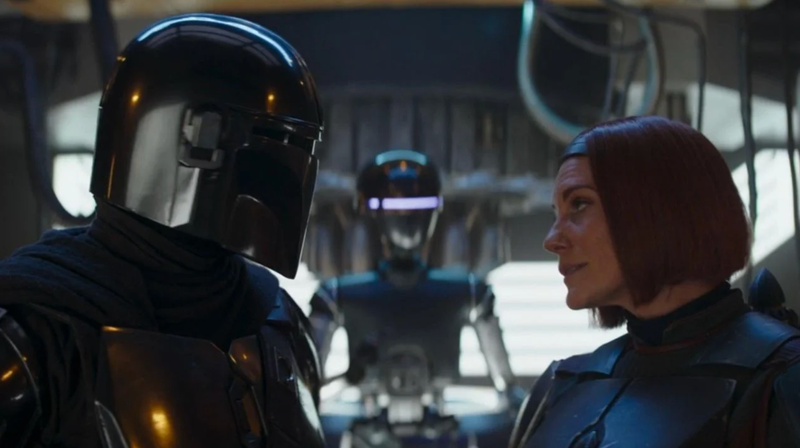
By James Whitbrook
Are the droids of Star Wars people? From the moment Wuher glowered at C-3PO and R2-D2 and snarled “we don’t serve their kind,” the galaxy far, far away has danced around the powder keg of its android heroes and villains as a fully fledged sentient species. But the more The Mandalorian has engaged with the idea, the more it has put Star Wars’ proverbial foot in its mouth.
In its earliest days, The Mandalorian at least wanted to try and present an intriguing twist on the question of droid personhood. Its protagonist, Din Djarin, was an orphan of the Clone War and harbored a deep-seated resentment of droids, especially combat droids, due to a lingering traumatic experience surviving a Separatist assault that claimed the rest of his family. From the get go, we see Din play with this resentment as, in his career as a bounty hunter, he is repeatedly confronted with the usage of droids, whether as the facilitators of trade or in his unlikely partnership with the assassin droid/bounty hunter IG-11. As Din proceeds to have his worldview challenged over the course of the first season thanks to his adoption of the young Grogu, in turn we see his ability to move on from the familial trauma that created his resentment of droids in the first place. It’s a growth of character that climaxes on an emotional beat during the season’s finale, where Din is willing to have his new ward protected by IG-11, and to feel a profound sense of loss when the droid chose to sacrifice itself to protect its friends in turn.
Fast forward to season three and things have jarringly taken a turn in Din’s attitude to droids. The latest season perplexingly opens with Din, reunited with Grogu after a brief separation that was resolved in an entirely different TV show, possessively insistent that IG-11 was the only good droid in the whole galaxy. He’s desperate to rebuild the droid as a partner to conduct an exploratory mission to the ravaged planet of Mandalore… a quest Din just completely gives up half an episode later, now apparently just fine to have R5-D4 foisted on him, so long as he can constantly disparage the astromech droid for not being suited for the task Din wanted a former assassin model for. All this is weird for myriad reasons, but they’re no longer the core of The Mandalorian season three’s unhinged approach to droids as an individually realized group of beings—it just sets the stage for it, as Din vacillates wildly between believing in The One Good Droid and then constantly berating the one he’s left with.
[Read more]
Spider-Man 2’s Yuri Lowenthal on Growing to Be a Great Peter Parker

By Justin Carter
Like all big superheroes, Spider-Man has been played and voiced by a variety of different people over the decades. There’s a certain art to the wallcrawler that a number of voice actors have managed to perfect in recent years, and among those is longtime performer Yuri Lowenthal. Known for a number of roles during the 2000s and 2010s—like Ben 10 and the Prince of Persia in Ubisoft’s Sands of Time trilogy—Lowenthal has voiced the hero starting with Insomniac Games’ Marvel’s Spider-Man.
This week’s Spider-Man 2 sees him voice the hero once again, and while talking to io9, Lowenthal was quite candid about getting to play a Spider-Man who’s been around the block, but still has room to grow as both a hero and a man. Unlike most Spider-Man media, Insomniac’s version of the character moves forward in his life, and Spider-Man 2 sees Peter truly coming into adulthood. Set two years after the first game, it finds him still dealing with the death of Aunt May and figuring out what it means to be a superhero in his mid-20s. Even when the game doesn’t explicitly call attention to it, players and longtime Spider-Man fans can feel the passage of time weigh on this Peter in a way they may not with other incarnations.
Lowenthal described playing this Peter as “a beast unto itself,” largely due to how Insomniac has worked to bind Peter’s superheroic life with his everyday normal life. And by skipping past the origin story to showing a more experienced Spider-Man, Insomniac has been allowed more narrative freedom they previously might not otherwise have. “You get all the stuff you love about this iconic character, and yet the story makes it different enough for you to perk up your ears,” he said of the games’ stories. “This story creates this Peter. By [Insomniac] starting Peter when they did, we still get all the Spider-Man stuff we love—he’s an older Spider-Man, but there’s still something new about it.”
22 Ridiculous Tables From the 1979 Advanced Dungeons & Dragons DM’s Guide
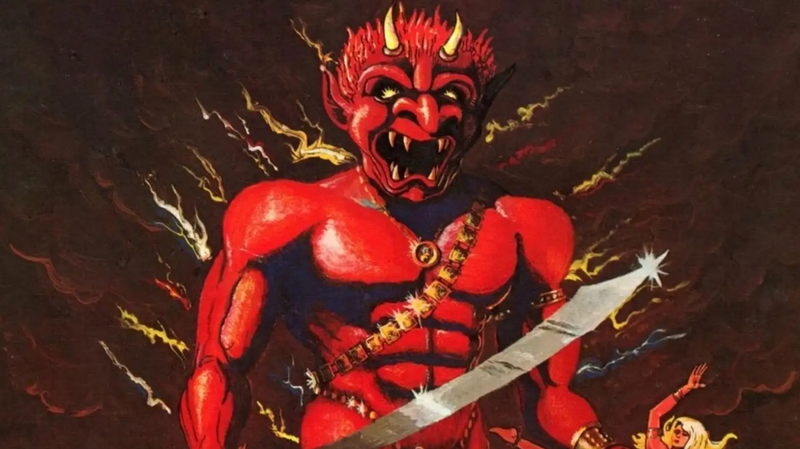
By Rob Bricken
Gary Gygax, creator of Dungeons & Dragons, really wanted to get his money’s worth when it came to the various dice used to play the game. That’s the only possible explanation for the overwhelming number of tables inside the AD&D 1st Edition of the Dungeon Master’s Guide. Gygax wanted players to roll for practically everything, from how religious NPCs could be to how often players would most likely run into a dinosaur in specific climates. It’s wild stuff, but these tables are even wilder.
[Read More]
A Link Between Genders: Trans Joy and the Legend of Zelda
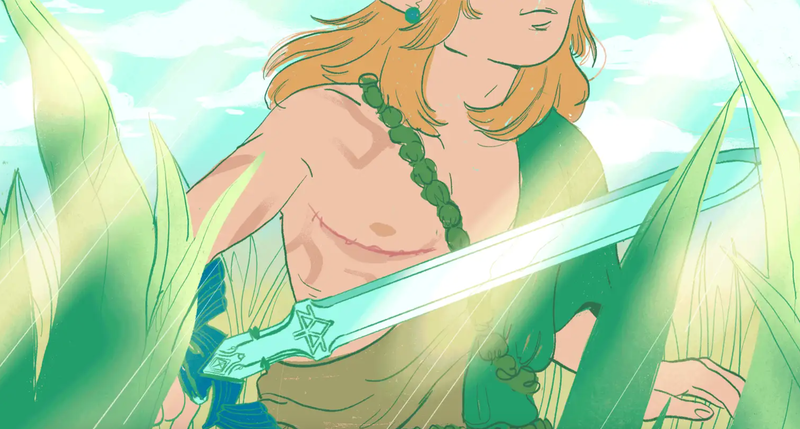
By Linda Codega
“It is inevitable all of us will see something of ourselves within Link,” says Keroblin, a Zelda fan who first remembers playing Phantom Hourglass in 2007, and identifies as transmasculine and agender. “We’re an active participant even [when] we can’t make narrative decisions, because we get to decide who Link is. It is easy to discover yourself and your gender through a character like this, and to make trans readings, as the lack of traditional gender roles creates, maybe for the first time you’ve seen, a world where all you have to be is kind and brave.”
Today, Nintendo released Legend of Zelda: Tears of the Kingdom; the sequel to 2017’s Breath of the Wild. Both games (and really, all the games in the Zelda franchise) follow a young man named Link who is tasked with rescuing the kingdom of Hyrule from a great evil. Breath of the Wild was an incredibly beautiful, poignant game, full of emotional stories and sidequests; it ushered in an era of exciting new open-world gameplay for the Zelda franchise. Breath of the Wild quickly became a bestseller and later won Game of the Year at the Game Awards. And now, gamers are returning to its version of Hyrule. But some of them have changed.
[Read more]
Good Omens’ Michael Sheen and David Tennant Are Just as Excited as You for Season 2
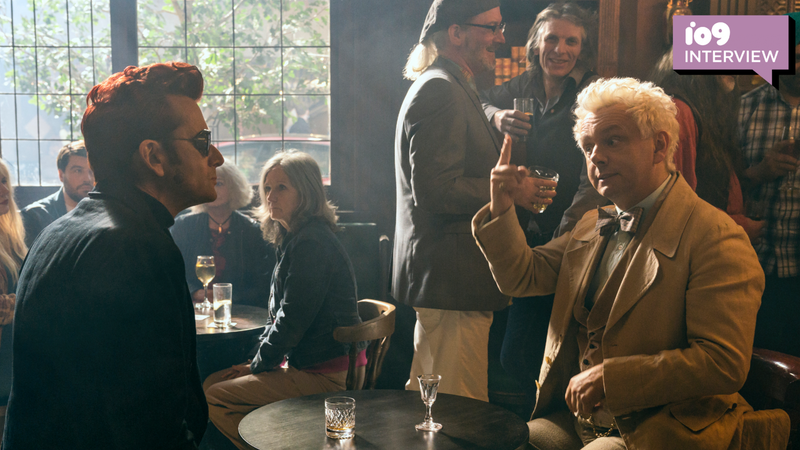
By Cheryl Eddy
Good Omens is back, thank heaven and hell, and with it Michael Sheen and David Tennant as the angel Aziraphale and the demon Crowley. Ahead of Prime Video’s second season following the cosmic characters created by Neil Gaiman and the late Terry Pratchett, io9 caught up with the fan-favorite stars.
(These interviews were conducted prior to the start of the SAG-AFTRA strike.)
Season one of Good Omens showed us Aziraphale and Crowley hanging out in the Garden of Eden. But as season two’s opening shows us, that wasn’t actually the first time they met. Turns out they had an encounter at the birth of the entire universe—and that’s where their first impressions of each other were formed.
“I think Aziraphale is very struck by Crowley,” Sheen said. “It’s hard to put a finger on what it is, but something about him makes Aziraphale’s ears prick up. And then almost immediately, as is always the way with Crowley, he gets annoyed by him. He gets infuriated by him, he gets intimidated by him. And very worried by him—Aziraphale always finds Crowley a worrying presence. He’s always rocking the boat. We see all those things at play in that first meeting in the second series—where he’s sort of drawn to him and kind of impressed by him, but very worried by him as well. And nothing changes really, as it moves on.”
Tennant reflects that Crowley didn’t quite have the same experience. “There’s certainly no sense to Crowley that this is someone who is going to become terribly important to him, so central to his very existence, but then Crowley’s still an angel at that point. He’s got a long journey to go on before he becomes the character that we get to know,” he said. “[In this scene] we get to see how central they were to the creation of it all—and how misjudged Crowley was in the way that he imagined the hierarchy of heaven to work. So it’s a rather delicious little snapshot that I think also helps to inform their relationship forever, really. And of course, when we then cut to present day, they’re still the same two that met all those millennia before. So it’s a very pleasing little way to open the series. It was the first thing that Neil shared with us of season two, and it just felt immediately ideal, I thought, that was how we should reconnect with these characters.”
[Read more]
Blue Beetle Sets the Bar for DC’s New Movie Era
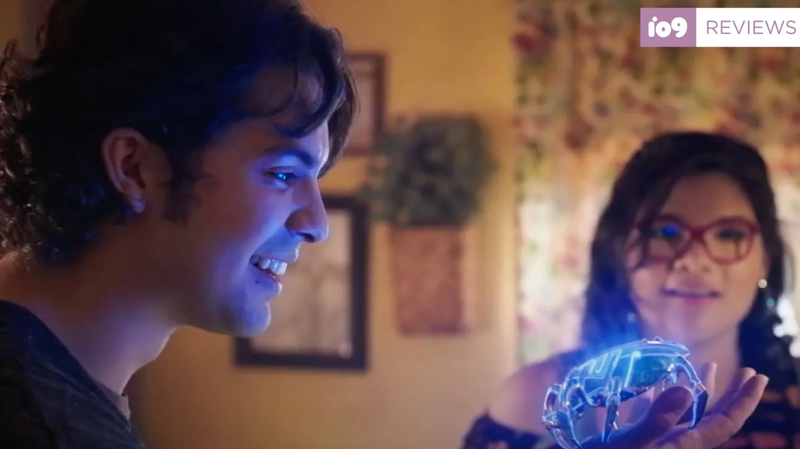
By Sabina Graves
This week, DC Studios starts anew with Blue Beetle, officially kicking off the James Gunn and Peter Safran-led superhero slate in earnest with the studio’s strongest film in quite a while.
Directed by Ángel Manuel Soto, Blue Beetle is a bombastic blast that evokes ‘90s-style action and offers a heartfelt origin for a hero the next era of DC moviemaking really needs. A total breath of fresh air—or a sigh of relief—for Warner Bros., its latest attempt at a DC Studios franchise universe lands a strong debut for a new generation. Starting with Gareth Dunnet-Alcocer’s adaptation of Jaime Reyes’ Blue Beetle run is a smart move; the relatively unknown DC hero works perfectly as a gateway into the new worlds of James Gunn’s Gods and Monsters.
Xolo Maridueña (Cobra Kai) is a star in the making leading Soto’s superhero debut. The sheer optimism of Maridueña’s Jaime Reyes as he returns to Palmera City from Gotham’s School of Law with a degree that doesn’t get him the job he expected is instantly relatable, as he discovers that slip of paper his family worked so hard to help him get won’t help them back. With gentrifying corporations at their door and a home on the line, Jaime steps up to help his family by any means possible. Even if that means being a pool boy at the Kord estate, owned by Palmera City’s resident corporate tech overlord Victoria Kord (Susan Sarandon), who’s running her brother Ted Kord’s (the mysteriously missing Blue Beetle) company with aspirations to acquire more global resources for the “greater good.” Yeah, like that’s not a red flag when people say they’re trying to use all the money for a greater good that benefits them, yet also happens to displace marginalized people.
We Think Rian Johnson’s Poker Face Is a Superhero Show, and He’s OK With That

By Germain Lussier
Columbo. Kojak. Murder, She Wrote. These are the shows most commonly mentioned when describing Peacock’s new show, Poker Face. And, it being from Rian Johnson, the mastermind behind the Knives Out films (as well as The Last Jedi), the comparisons are accurate and logical. Poker Face is, at its core, about a woman named Charlie (Natasha Lyonne) who travels the country and solves murders.
But there’s a twist. Charlie is a human lie detector. She can instinctively tell, for a fact, if a person is lying about something. So if you step back and describe that in a different way you might say she has an innate, unexplained power that makes her superior to others. Or, in other words, a superpower.
We here at io9 have been debating this conclusion for weeks leading up to Poker Face’s January 26 debut on Peacock—and to get the definitive answer while diving a bit more into this mysterious ability of Charlie’s, we went to the man himself, show creator Rian Johnson.
Germain Lussier, io9: Mr. Johnson, how are you doing, sir?
Rian Johnson: Great, man. How you doing?
io9: I’m doing great. So io9, as you may or may not know, is primarily a sci-fi website.
Johnson: Check it every single day. I read it every day.
io9: Oh. Wow. Thank you. Well, in the past few weeks, we’ve been debating something about the show, so I want to explore and ask this question. Do you think Charlie’s ability to detect a lie is a superpower?
Johnson: [Deep inhale] Where do you draw the line? It’s like the Asimov thing of any significant scientific advancement is indistinguishable from magic. And in that case, I don’t know. What’s the difference between just having something baked in the back of your brain that can pick up subtle little things that trigger that, and quote-unquote ESP? So I don’t know how to answer that question. I don’t know. I mean, it’s definitely superhuman. In that, it’s beyond reality in terms of what humans can do, but it’s also something that’s weirdly plausible. So if it means you’ll cover it on io9, I think. Yes, it’s absolutely [a superpower].
[Both laugh]
It’s pure science fiction! It’s pure sci-fi [Laughs].
[Read more]
Bandai Wants Gundam’s Lesbian Couple to Be Open to Interpretation, Somehow
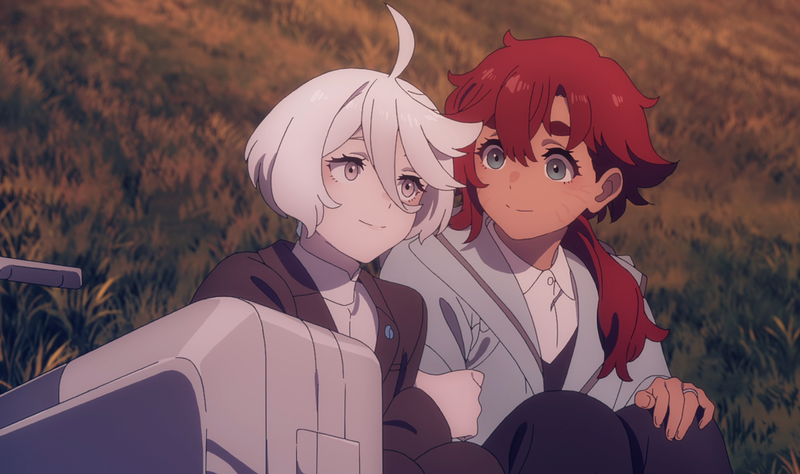
By James Whitbrook
Witch From Mercury broke ground for the Gundam franchise with—and sales records spurred in part by—its depiction of the burgeoning romantic relationship between its main characters Suletta Mercury and Miorine Rembran. But while the series itself came about as close to text as it could on their bond, Bandai itself is more hesitant.
This past week the latest issue of Gundam Ace magazine featured an interview with voice actress Kana Ichinose, who played Suletta Mercury, in the wake of the conclusion of the show. The final scenes of the series, set in a flash-forward to three years after the events of the main show, depicted Suletta and Miorine embracing and wearing matching silver bands on their ring fingers.
“After three years, they seem much closer, and to see them married like that really touched my heart,” Ichinose’s comment reads in part, the first explicit confirmation of the characters’ marriage outside of the show itself. News of the confirmation saw “#スレミオ結婚,” or “Sulemio Marriage,” trend on social media, as the characters regularly did throughout Witch From Mercury’s broadcast run.
However, digital copies of the issue of Gundam Ace had Ichinose’s statement edited to remove the mention of marriage—leading to concerns of censorship that eventually saw Sunrise (née Bandai Namco Filmworks) parent company Bandai Namco officially respond yesterday. Not to apologize for the removal, however: to apologize that the reference had made it into the print run in the first place.
[Read more]
Not Every Franchise Is Worth Reviving
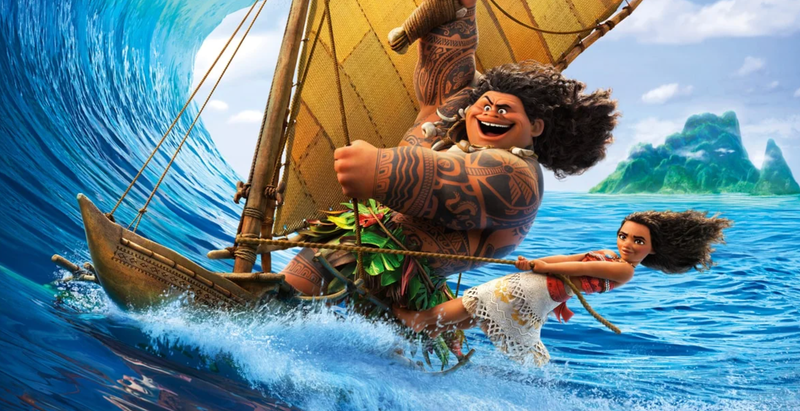
By Justin Carter
Nostalgia has long been an important part of the creative industry, particularly as it relates to film and TV. There’s so many reboots and revivals these days you could fill a modest paperback, but not all of them are created equal. And by that same token, they’re not announced and received equally, either.
Earlier in the week, Disney announced that a live-action remake of its 2015 animated film Moana is in the works, with star Dwayne Johnson set to return. Disney also recently announced a live-action Aristocats—and those are just two of the many remakes the studio has planned. After the success of Puss in Boots: The Last Wish, Illumination finally confirmed it’s working on a Shrek 5 with plans to bring the original cast back (as well as give Eddie Murphy’s Donkey a spinoff of his own). Warner Bros. is also getting in on this; yet another Game of Thrones prequel is being discussed, as is an HBO Max series for Harry Potter after video game Hogwarts Legacy sold like gangbusters.
This has always been a part of the game—a reboot here, a revival there. Asking the entertainment industry to not tap into the nostalgia well is basically an impossible ask, and I know I’m part of the problem. I’m not going to act like I haven’t completely marked out time for recent stuff in this vein like Creed 3 or Scream 6. But what helps those two particular examples stand out, in my mind, are how they feel unique and like actual films first. Even though both of their respective franchises are going to continue on and have anchors to their pasts, they’re able to stand on their own and bring their own specific energy to the table.
[Read more]
Robert Englund Reveals His Favorite Freddy Krueger Moments
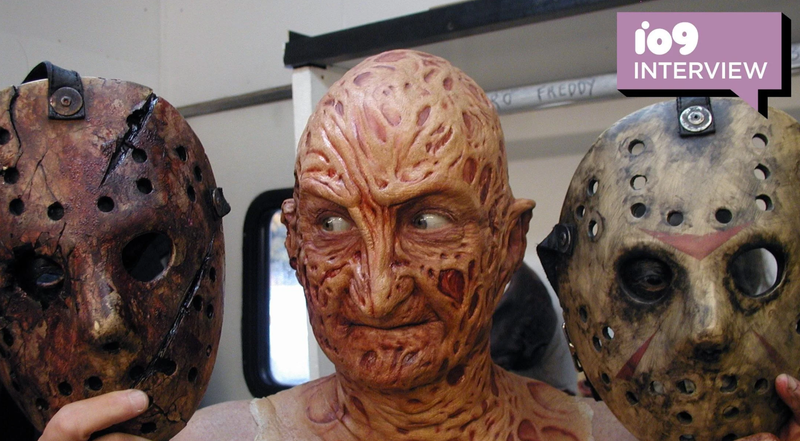
By Cheryl Eddy
How did a classically trained performer go from quirky character actor to slasher icon? New documentary Hollywood Dreams & Nightmares: The Robert Englund Story takes the viewer through the life and career of the man who brought Freddy Krueger to terrifying (and sometimes hilarious) life in the Nightmare on Elm Street series.
io9 got a chance to chat with Englund about the doc—which is co-directed by Gary Smart and Christopher Griffiths, and hits Screambox and digital June 6, with a Blu-ray release July 25. We also asked about Stranger Things, Freddy’s snappy one-liners, and how Nightmare creator Wes Craven helped him embrace his place in horror history.
Cheryl Eddy, io9: The documentary digs into something I’ve always wondered, which is what it’s been like for you to be so associated with this one hugely iconic horror character. You mention in the movie that Wes Craven actually helped you put it into perspective. What advice or encouragement did he give you?
Robert Englund: I think what Wes did was to remind me to respect the horror idiom. I had come out of the theater in the early ‘70s, and I was a bit of a snob. I had been doing lots of theater—Shakespeare and the classics—and even though as a child I loved horror films, I’d sort of forgotten that. Wes reminded me how important they are and to respect them. That helped me navigate the success of the franchise, because it was pretty fast and pretty overwhelming. I went from just being a utility actor and playing best friends and sidekicks in the ‘70s, and I had a nice career, but almost overnight I did a science fiction television series [V] and then Nightmare on Elm Street, and because they’re genre, they were both international hits. Fantasy, horror, science fiction—they travel much better than, let’s say, rom-coms, [because rom-coms are] very specific culturally. It was this great boost to my career to be an international actor.
io9: I loved hearing the tidbit in the documentary that you signed on for Elm Street in large part because you had a window open in your schedule.
Englund: Yeah, that was a hiatus.
io9: Did you have any idea at the time that it would be so huge? Was there a specific moment where you were like, “Whoa, this is a phenomenon”?
Englund: I do remember at some point—I’m trying to remember what the scene was or the sequence—but the set decorator and art crew, scenic crew had done some really quick, overnight, kind of surrealistic set in Nightmare one, and I remember thinking, “This is pretty great stuff.” I knew it was low-budget; they kind of protected me from the budget problems, [but] we [were] running out of money on the set and stuff, and I just wanted the people to see the film. I knew we were doing something special and good, but I had no idea, absolutely no idea, that it would become this iconic franchise.
[Read more]
The Fast and Furious Franchise Has Done Paul Walker Dirty
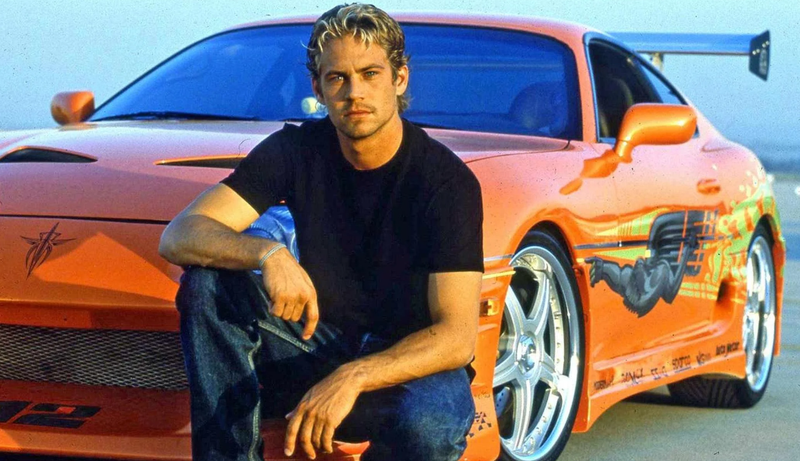
By Germain Lussier
When one of the biggest stars of a franchise dies, obviously that franchise is no longer going to be the same. Such is the case for the Fast and Furious franchise which, 10 years ago last week, lost one of its original stars, Paul Walker. Since Walker’s death, several films have been made continuing the Fast story, and with each subsequent entry Walker’s character has been treated with an odd disregard and growing disrespect that feels at odds with the series’ universal message of family.
This story began 22 years ago when the original The Fast and the Furious was released in theaters. The Point Break-inspired racing film was a hit for many reasons, among the biggest being the adversarial relationship between Walker’s character, undercover cop Brian O’Conner, and street racer Dominic Toretto, played by Vin Diesel. The mortal enemies turned friends gave the film a complex beating heart and when Diesel didn’t return for the second film, the filmmakers introduced a very similar foil for Brian, Roman Pierce (Tyrese Gibson), to give the film that same feeling.
Walker and Diesel wouldn’t reunite until the fourth film, 2009’s Fast and Furious, and it’s not a coincidence that’s when the franchise shot into the stratosphere. By this point, the characters had each been through so much they needed each other and that notion of “family” which has since become a Fast and Furious staple was born. It continued into the franchise’s fifth, sixth, and seventh films, which is when tragedy struck.
Walker died November 30, 2013, right in the middle of production of Furious 7. After a period of grieving, drastic changes were made to the film, with Walker’s brothers agreeing to stand in for him so it could be completed. The movie ends with Brian and Dom’s sister Mia (Jordana Brewster) welcoming their first child and the group acknowledging that they’d both be leaving the gang. Brian drives off into the sunset, alive, well, and happy with his choice of family over crime.
Agent Carter Did Spycraft Better Than Secret Invasion Ever Could
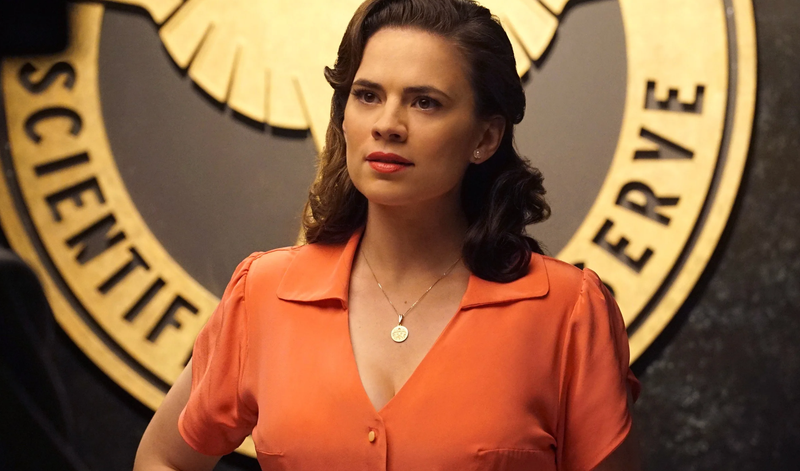
By Linda Codega
A few months ago I started the thankless task of recapping Secret Invasion, and now, a month after the series ended, I’m still deeply underwhelmed by the predictable blandness of the entire thing. Then, because I was hit by a fit of nostalgia and because I find Hayley Atwell absurdly attractive, I started a re-watch of the other grounded spy thriller from Marvel: Agent Carter.
After I finished the second season (the show was unceremoniously cancelled in 2016), I was left wondering… how did Secret Invasion manage to fuck up so badly that Agent Carter, a network television release with fewer stars, way less hype, and without Secret Invasion’s $US200 million budget, was better written, better paced, and more enjoyable than Marvel’s most recent spy series?
For some background, Agent Carter was a short-lived Marvel television series that ran for two seasons on ABC from 2015 to 2016. The first season saw Hayley Atwell’s Agent Peggy Carter attempting to establish herself within the boy’s club of the postwar spy organization, the Strategic Scientific Reserve (SSR), hoping to clear Howard Stark’s name after an arms deal goes sideways. It is a science-fiction dramady couched in the Marvel universe, but with a main character who has no powers, Agent Carter kept both high heels firmly on the ground.
Secret Invasion was touted as “grounded,” and despite the fact that most of the plot was going to undoubtedly circle around the issue of what to do with the aliens that had clandestinely made Earth their home in the ‘90s, I believed the pitch. So much of spycraft is combining information and opportunity—in the right hands, the premise of a group of shapeshifting Skrulls helping Samuel L. Jackson’s Nick Fury puppet the Avengers into compliance has potential. What we got, however, was a messy global political crises exacerbated by a single man’s hubris—the exact opposite of what Agent Carter was doing.
How Disney World’s New Tron Lightcycle/Run Coaster Uploads Users to the Grid

By Sabina Graves
The Digital Frontier opens this week with the new ride Tron Lightcycle/Run at Walt Disney World’s Magic Kingdom.
The new thrill coaster brings the digital landscape of the Grid to Tomorrowland, straight from the cult fave sci-fi Tron movies with a good dose of Tron: Legacy’s Daft Punk score. io9 recently attended media days for “All the Disney Thrills” at Disney Parks to preview the attraction, where we talked to Disney Imagineers and Tron’s filmmakers about seeing their creations take on a whole new life.
“When we did Tron initially some people thought it was too far out and had a hard time dealing with it. And I thought, ‘Oh, maybe, maybe I wrote the wrong story,’” shared Tron creator and screenwriter Steven Lisberger. “And then over the years you start to realize, ‘No, I wrote the right story.’ It’s been building ever since, you know; Tron: Legacy and now the ride is kind of the ultimate payoff to see a fantasy become totally real. It’s amazing.”
While Tron Lightcycle/Run is the sister version of the Tron ride that opened in 2016 at Shanghai Disneyland, the Magic Kingdom variant is the fastest coaster attraction at Disney Parks. It’s also a striking addition to Disney World’s landscape, as Imagineer Audrey Hauser pointed out. “Not only did we get to add this amazing new coaster, but it’s also got this beautiful plaza and concourse leading up to it. It’s such a big architectural statement and we’re really excited to have added to the skyline of Tomorrowland.”
Prior to Tron Lightcycle/Run’s arrival, Tomorrowland had been thematically slumbering, populated by nostalgic visions of a future long past, with the beloved PeopleMover and Carousel of Progress carrying the weight of Walt Disney’s original intention to feature futuristic experiences. With Space Mountain being the coaster E-ticket for so long, it’s been a while since there’s been an attraction that really highlighted the themed land’s tenets. Tron: Legacy producer Justin Springer feels Lightcycle/Run is right at home. “I think there’s this constant quest to make the virtual become real. And I think that’s one of the coolest things about the ride. We work really hard in the movies that we’ve made to try to bring audiences in and make them feel like the virtual world is a real place.” he said, motioning to the coaster track. “With a ride like this, you’re able to actually physically create that world. And as soon as you pass through that threshold and get onto a Lightcycle for the first time, it feels like you’ve really done it beyond what you could ever put on screen.”
[Read more]
Hey, Maybe Star Wars Should Leave Mandalore the Hell Alone
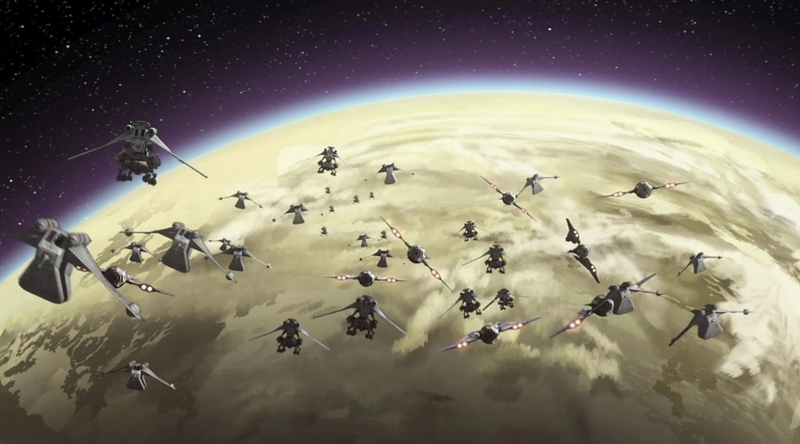
By Rob Bricken
To paraphrase Luke Skywalker, “If there’s a nice center to the universe, Mandalore is the planet it’s farthest from.” The home planet of Jango Fett, Bo-Katan Kryze, and Sabine Wren is a hellhole, and it has been throughout the entirety of Star Wars’ main continuity. So much so, in fact, that I don’t think anyone needs to go back, whether it be characters or viewers.
Mandalore has been a major point of interest—obsession may be a better word—for Dave Filoni since he began the Clone Wars cartoon in 2008, and has continued to this day, where he’s more or less shepherding the entirety of the Star Wars TV universe. Mandalore featured in a major arc in Clone Wars; it was a major storyline in the Rebels cartoon; and now it seems it’s going to be the focus of The Mandalorian’s third season, as Din Djarin (Pedro Pascal) gets enlisted to help the deposed Bo-Katan and her fellow faction of Mandalorian warriors regain control of their ancestral planet.
Except as Djarin points out in season two of his TV series, Mandalore is “cursed” and “everyone who goes there dies.” He’s not wrong. The history of Filoni’s Mandalore is filled with death, tragedy, death, violence, and more death. It technically began before the Clone Wars, during the ancient days of Old Republic, thousands of years before the events of the Star Wars movies. The Mandalorians were a war-mongering race that frequently clashed against the Jedi for centuries, ruining most of the surface of their planet in the process. It led to a group of more peaceful “New Mandalorians”… that ended up fighting the old-school Mandalorians, and burning the remains of the planet’s grasslands into ash.
[Read more]
Did Animation Take Its ‘Next Step’ in 2023?
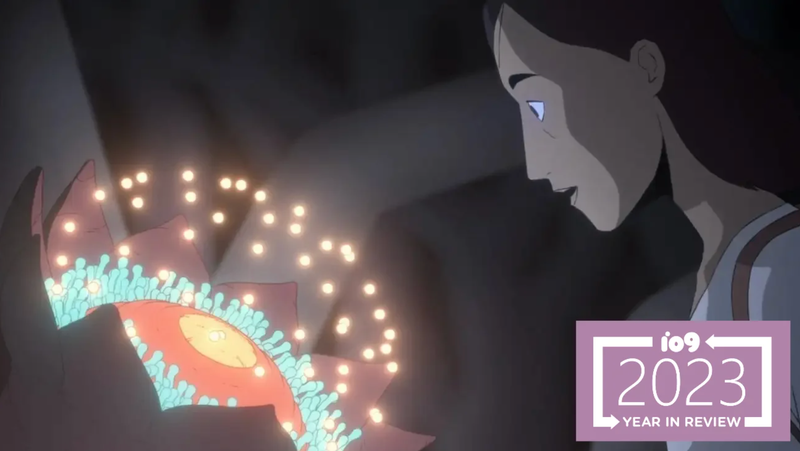
By Justin Carter
In mid-March during the Oscars, Netflix’s Pinocchio took home the award for Best Animated Feature. During his acceptance speech, co-director Guillermo del Toro said the animation medium was ready to be taken to “the next step,” a statement that was meant to be inspiring after animation was belittled at that very ceremony just minutes prior. The category presenters were dismissive of animation overall, basically calling it kiddie fare that parents have to suffer through just to shut their kids up.
That kind of joke would already be rude even if animation wasn’t the one arm of entertainment to not be noticeably affected by the pandemic, but what made it sting all the more is that 2022 just wasn’t kind to the animation industry. Between shows getting canceled without any discernable reason, projects being scrapped mid-production, and things getting yanked off streaming services, getting insulted at an awards ceremony wasn’t exactly fun. Del Toro’s words, later echoed in an essay by Phil Lord and Chris Miller, were a declaration that the animation space deserved more respect. Throughout 2023, I’ve been wondering about what “the next step” tangibly looks like when shows and films take so long to be developed and come out, but surprisingly, the universe had an an answer to that question.
In the same way that 2023 has been an incredible year for video games as a product, the same is true of animation. Spider-Man: Across the Spider-Verse was a thrilling (albeit shaky) sequel to the 2018 juggernaut that was one of many animated standouts. This year really felt like studios were more than willing to walk away from the tried-and-true realism that Disney and Pixar made into the gold standard in favor of getting a little more experimental and weird. Teenage Mutant Ninja Turtles: Mutant Mayhem had a similarly unconventional look as the Spider-Verse movies, but in a rougher, grosser way that felt right at home with the mutated creatures and youthful energy of its constantly amped-up terrapins.
[Read more]
Sleep No More Lives Up to Its Legacy in Immersive Theater
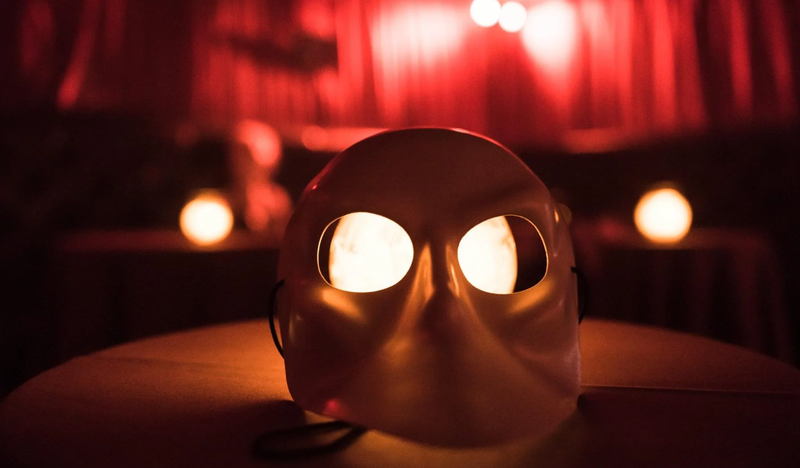
By Sabina Graves
Manhattan’s McKittrick hotel looms nondescriptly while housing an entire world of mystery and intrigue inspired by Shakespeare’s Scottish Play. During Halloween season io9 was invited to its current run.
Having experienced immersive theater on the West Coast for the better part of 10 years, I’d often heard about the show that many say started it all. Sleep No More is talked about in lounges and waiting areas of other haunting immersive productions like Jon Braver’s Delusion interactive plays. I was told, “Oh you’ll love Sleep No More” and “You have to make it out to Sleep No More.” In its current iteration since 2011, the performance marked the first immersive experience for many audiences in the time before other immersive plays sprang up around the country. Its debut came long before Walt Disney World’s ill-fated Star Wars: Galactic Starcruiser would attempt the monumental feat of having you live in a big space opera themed after Lucasfilm’s franchise for 48 hours (and a pretty penny).
Finally, during a recent rainy weekend in New York City, I was able to check this OG production off my list. When you enter you’re led into what feels like the wings of a stage; you forfeit belongings like your phone, purse, and whatever else you carry on you at coat check. You’re to play a spectating, silent part, and are given blank, hollowed-out masks to wear as you are ushered into the tragic tale of Macbeth.
The creaking of wooden floors and the swishing of dresses immediately transport you into another time. It’s sizzling and cinematically moody as you witness a noir tale of power and murder. It all unfolds around you with the troupe really embodying specters whose fates are imprinted between the walls and in the rooms of the hotel like a twisted purgatory. It’s a truly haunted hotel, but just not in the jump-scare way. They’re the poltergeists of play, and their memories play on a loop over and over as you’d imagine ghosts cursed to live out their unfinished business would. And they see you.
[Read more]
Our Flag Means Death’s Finale Was Full of Hurt For Izzy Hands Fans
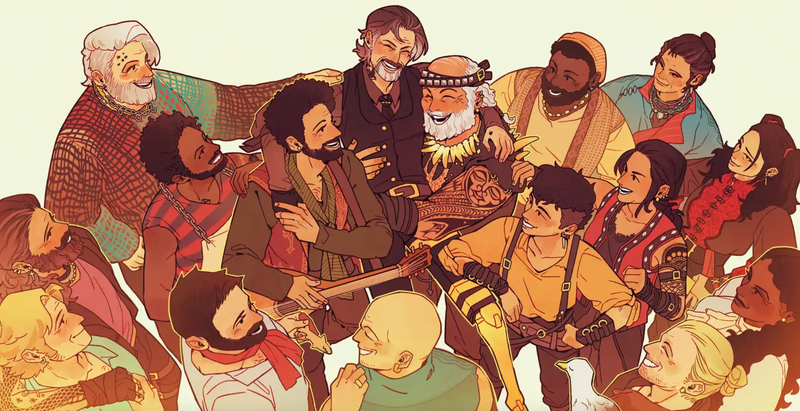
By Linda Codega
Last week, the season two finale of Our Flag Means Death aired on Max. The eight-episode season was marked by incredible acting, a mix of goofy swashbuckling and brutal nose-peeling mutilation, and an encompassing acceptance of queerness that made the first season lightning in a bottle.
For some fans, however, that bottle broke at the end of the eighth episode, when Con O’Neill’s Izzy Hands—first mate, jilted lover, and sometime serenader—was shot and killed. His death, the first major character to die in the series, sent ripples across Our Flag Means Death’s diehard fans. io9 spoke to some of those fans to try and understand why this show, this fandom, and this character elicited such a massive online reaction.
In the season two finale, Izzy gets shot by the villainous Prince Ricky Banes (Errol Shand) and dies in the arms of Edward Teach, a.k.a Blackbeard (Taika Waititi). David Jenkins, Our Flag Means Death’s writer and showrunner, described the moment in an interview with io9 as “a lucky shot.” It’s the sort of randomly cruel brutality that often stalks pirate stories… but doesn’t usually appear in workplace sitcoms or rom-coms, and doesn’t usually happen to main characters.
Izzy dies apologizing to Blackbeard, who had assaulted him and encouraged him to commit suicide at the beginning of season two. None of the other members of the crew of the Revenge, who had become very close to Izzy over the season, say anything during his painful death. The episode ends a few minutes later with a shot of a cross made from Izzy’s prosthetic leg, and his ubiquitous ring-and-kerchief tied around the brace. Then, Ed retreats into a cabin with his lover, Stede Bonnet (Rhys Darby), and a seagull lands on the beam of the cross.
[Read more]
Disney’s Robin Hood Is My Wife’s Favorite Movie, But Far From Mine

By Germain Lussier
For 50 years, people all over the world have been falling for a fox. No, not Michael J. Fox. Not 20th Century Fox either. We, of course, mean Robin Hood from Disney’s 1973 animated film. The dashing fox with the British accent who robs the rich gives to the poor and looks damned good doing both.
One of those people who fell head over heels for Robin is my wife, Jayne, who still considers Robin Hood to be one of her favorite movies ever. As a result, our home is adorned with not just my Star Wars paraphernalia, but lots of Robin Hood collectibles as well. I can be obsessive about things, and she can be too, which is one of the many, many reasons we work so well.
One early red flag on her part was the fact I didn’t watch Disney’s Robin Hood growing up. That’s why, early on in our relationship, I was sure to see what all the fuss was about. It had its charms, of course, but I didn’t love it. Which, as you can imagine, upset her. But I always encouraged her fandom, got excited when we found new figures or books, and for the film’s 50th anniversary, I wanted to give Robin Hood another look and see, even if I couldn’t love it, why she did.
Talk to Me’s Directors on Their Genuinely Terrifying Horror Debut
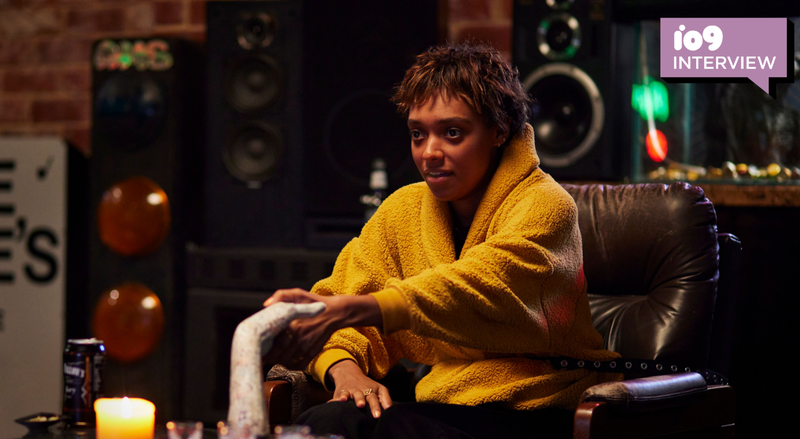
By Cheryl Eddy
When io9 saw Talk to Me at the 2023 Sundance Film Festival, we knew it would become a breakout horror hit, especially once A24 became its distributor. This week, the film—which is both clever and alarmingly frightening—finally opens wide, and audiences can see what all the buzz is about.
Talk to Me follows a group of high schoolers, including the troubled Mia (Sophie Wilde), who come across a mysterious embalmed hand with the power to connect the living and the dead. The teens think being possessed is a scream, and eagerly gather for parties where they take turns filming each other under the influence. What could possibly go wrong, you ask? So much goes wrong for the characters in Talk to Me—but horror fans are going to love watching it happen.
Cheryl Eddy, io9: Talk to Me is your feature debut, but you’ve been running a hugely popular YouTube channel for a decade. Was making the leap to movies always the goal, and why did you decide to make your first film a horror film?
Michael Philippou: Ever since we started, it was the main goal. It’s what we always wanted to get into. We’ve been doing YouTube videos for a decade, but we were making stuff for a decade before that as well. The end goal was always getting into feature films and television.
Danny Philippou: Obsessed with it. The ultimate dream that I always had was, like, walking into a cinema and seeing my poster up on the wall. And it actually happened! Going into AMC a couple of months ago to watch another film, and then seeing the poster for the first time was so incredible.
Michael Phillippou: As for horror films, there were lots of things that we were writing, but Talk to Me is the first one that really caught fire and gained momentum fast. So it wasn’t a conscious decision to be like, “We’re going to do a horror film first.” It’s just the one that had the most momentum.
io9: Talk to Me is a unique horror film for a lot of reasons, but one that stood out to me is that while there’s a final girl character—she’s not a typical horror-movie “hero.” She does things that make the audience squirm. What were the reasons you wanted to center your movie around a character that’s sort of unlikable?
Danny Philippou: I guess it’s depending on who is watching, and how they’re relating to the characters. I think Mia is likable…
Michael Philippou: …It depends on the person.
[Read more]
2023 Should Have Been D&D’s Best Year, Until It Wasn’t
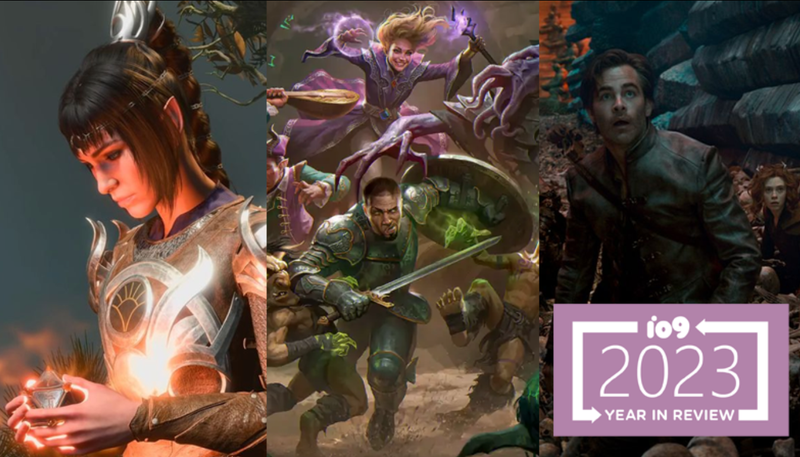
By James Whitbrook
Although it feels like it can be said every year recently, it’s hard to imagine a better year in terms of its influence than 2023 has been for Dungeons & Dragons. A movie, TV channels, a video game that has dominated the world, and of course a not-insignificant glimpse toward the game’s own future. But for all those highs, they are contrasted in lows that have nearly sundered all of that goodwill in the process.
Even since a combination of the rise of Actual Play and pandemic lockdowns bolstering a humongous surge in Dungeons & Dragons’ popularity, on the surface it’s hard to deny that 2023 has seen the TTRPG’s star ascend somehow even further. Still cresting the wave of Stranger Things’ fourth season making a nearly 50 year old lich one of the most infamous villains on TV (and Hellfire Club t-shirts a regular sight wherever you went), 2023 started strong with the release of Honor Among Thieves, the first big-budget D&D adaptation in 23 years. And while not barnstormer in terms of either critical or box office success, not only was it good enough—a remarkable success in and of itself, considering the cinematic legacy it was seeking to shake off—it’s seemingly only grown in cultural appraisal since its release. Jarnathan memes still go viral every other week, meaning, in spite of it all, somehow the Aarakocra have contemporary cultural cache.
‘Everything Is a Story’ Inside Wyrmwood Gaming’s Narcissistic Funhouse

By Linda Codega
“Can’t I just say what happened?” A tall man in a flat cap asks, looking around the sparse meeting room. “Isn’t truth an absolute defense?” This is Doug Costello, the CEO of Wyrmwood Gaming. “It is,” says head of HR Bas Antoine, “if you have the whole story.” The two go back and forth, brainstorming a response, Costello repeatedly looking into a camera as he dramatically recounts allegations of sexual assault. “The person who was allegedly raped never worked at the company,” he says, eyebrows raised. “I don’t know her name.”
The scene is from a fourteen-minute video titled “Wyrmwood Responds to SA Allegations,” a record of a group of men discussing what to do about recently-surfaced allegations of sexual assault at their company. Throughout the video, Costello makes statements like: “You have to get police involved.” He mentions alcohol as a factor in the allegation. In part of the video, Wyrmwood’s lawyer, Frank E. Biedak, gives the go ahead to share the video on their YouTube channel, alongside a written statement.
Wyrmwood Gaming is an unusually transparent company; while its core business is making luxury wood products for tabletop gamers, including dice trays, deck boxes and gaming tables, its executives seem equally concerned with the production of Wyrm Lyfe, a YouTube-based reality show focused on their daily activities at the company, filmed with handheld cameras and uploaded two to three times a week.
The program has over 100,000 subscribers, and fans usually reply to new videos with praise or earnest questions. But the sexual assault discussion was not Wyrmwood’s usual content. Comments on YouTube, Reddit, and Twitter decried the video as a “tone-deaf” and “harmful” way to handle serious allegations. Several corporate partners, including Dispel Dice and the mental health organization Take This, announced they would end their relationships with Wyrmwood. The company took the video down from YouTube in less than two days.
In a statement addressing the allegations, Wyrmwood said: “We take any allegation of inappropriate conduct, including, but not limited to, sexual assault, sexual misconduct and safety issues, very seriously. We consider the safety and well-being of our employees a top priority. To that end, we’ve made very significant investments in HR and Safety and will continue to do so.”
[Read more]
Not Even James Mangold Noticed Indiana Jones 5’s Wild Disney Animation Deep Cut
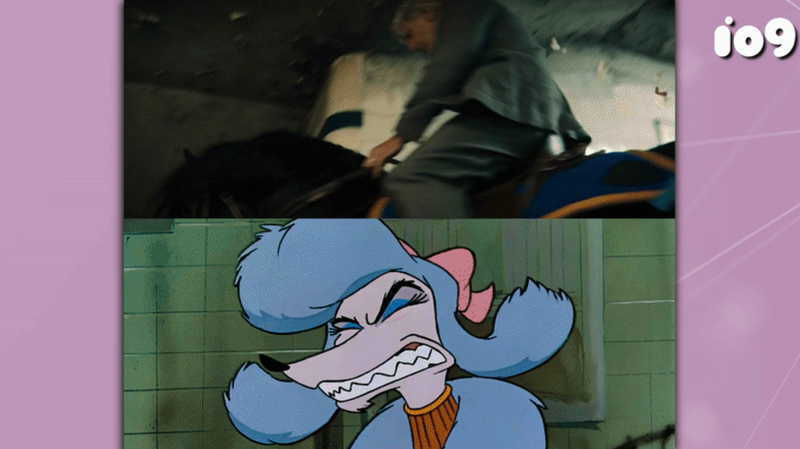
By Germain Lussier
So I’m watching Oliver and Company, the 1988 Disney animated film featuring the voices of Billy Joel and Bette Midler, and it hit me like a ton of bricks. As Oliver, Dodger, and the crew are being chased through New York City, they head into the subway and jump on the tracks. “This reminds me of Indiana Jones and the Dial of Destiny,” I thought. Minutes later, the credits rolled and I saw the following words: “Animation Screenplay – James Mangold.”
James Mangold, the director of Indiana Jones and the Dial of Destiny, worked on a movie 35 years prior that had an action sequence that was almost exactly the same. Surely, this couldn’t be a coincidence. Surely, Mangold’s dream was to one day remake this scene in live-action, and decades later, Indiana Jones, allowed him to do so.
Unfortunately, that was not the case. Speaking to Mangold on the occasion of Indiana Jones and the Dial of Destiny streaming on Disney+ and being available on 4K Blu-ray, we were able to ask him about this and, well, watch the video below or read about it under that.
Scavengers Reign’s Writers on Creating a Beautifully Hostile Sci-Fi Show
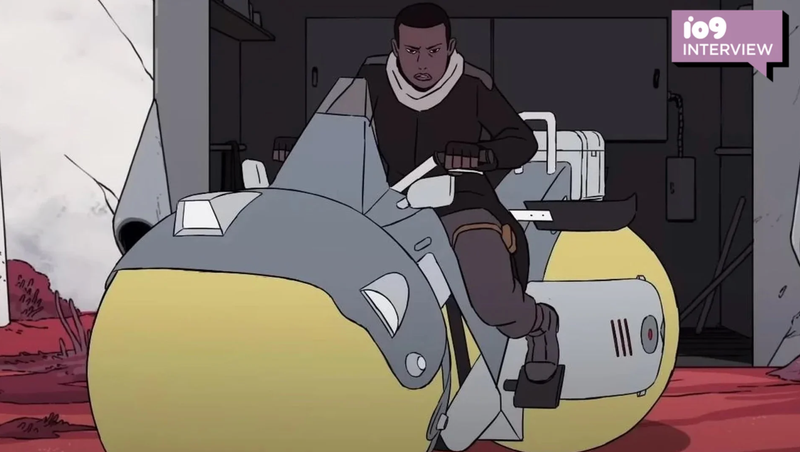
By Justin Carter
In 2016, Adult Swim aired Scavengers, an eight-minute animated short about a pair of human survivors on a hostile alien world. It wasn’t long before co-directors Joseph Bennett and Charles Huettner and production company Green Street were given the green light to make the short into its own full-fledged show, Scavengers Reign, which will soon air on Max and Adult Swim.
Like the original short, Scavengers Reign follows a handful of survivors of a downed interstellar freighter ship looking for a way off the alien planet they crashed on (or at least a way to stay alive). Even though it’s technically a Max original, it’ll feel right at home to those who watch it on Adult Swim: it’s appealingly gross in a way that defines some of the more out-there shows on the late night Cartoon Network block, and sports a simplistic art style that gets more detailed during key moments. Both elements are present in the original Scavengers short, where you can see the bones of what’ll eventually inform the 12-episode show. But even without the context of its source material, Scavengers Reign is an impressive show in its own right, with great visuals, an incredibly creepy alien vibe, and great atmosphere. It all comes together to provide what’s easily one of the best animated series from Max and one of 2023’s strongest animated outings.
Ahead of its premiere next week, io9 spoke with Bennett and writer (and Green Street co-founder) Sean Buckelew about how the show grew out from that initial short and what went into creating the alien fauna that help (and harm) the human cast, as well as building an alien world that’s as beautiful as it is gross.
Justin Carter, io9: What were some of the lessons you learned in creating the show with the short film as a jumping off point? How much did the reality of making the show change from your original expectations?
Joseph Bennett, co-creator: For starters, the original Scavengers short has no dialogue. There was a second where I thought it would be similarly sustainable for the series, but then I realized quickly it wouldn’t work. It’s hard to create a visual narrative for 22 minutes that can hold people’s patience, and I think even with that short, we were testing it. Having actual dialogue allowed for more story arcs and threads that we wanted to bring forward.
Sean Buckelew, writer: From the perspective of when we first started writing the show, I felt like the short showed us what could work and be compelling on a visual level. I think if you didn’t have that, and were going to write scripts, we wouldn’t have had that confidence. When we were writing, we had these big visual set pieces that we put in with more assurance that it’d work in execution. The short’s visual language inspired how we can approach writing and the kind of set pieces we could have.
[Read more]
Lore Olympus Creator Rachel Smythe on the Big Wedding—and More
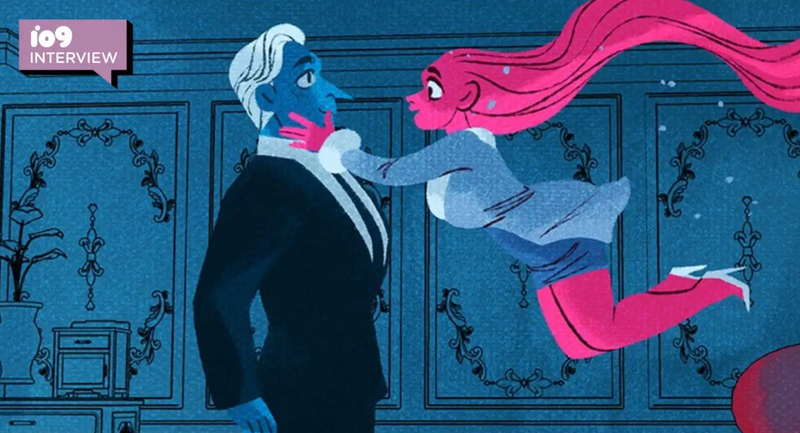
By Sabina Graves
Rachel Smythe is now on hiatus, but she had one important stop to make before her break: San Diego Comic-Con, where she was a special guest and was also awarded her second Eisner for her hit Webtoon series Lore Olympus.
For avid readers of the series, the midseason finale for season three—which dropped July 8—was quite the cliffhanger. io9 sat down with Smythe to discuss the wedding between the King and Queen of the Underworld that fans were waiting for, and the surprises that came with it. Hades and Persephone might have made it through the first chapter of their story, but there’s a lot more of their mythology to come.
Sabina Graves, io9: I am very excited where things are going. We have finally had you know, the wedding—last time we talked, you were building up to it and now it’s happened! What is your favorite part about finally reaching this moment between Hades and Persephone?
Smythe: It feels like a real milestone because, as you know, I’ve been working on the story for a very long time. So it was a very rewarding chapter to write. I think in writing the wedding, it’s always really tough because weddings are very personal, right? And everyone’s tastes towards weddings are very different. And so in designing all the clothes—it was really hard, but I think in the end I was like, “I’m going to go with exactly what I want.” And I did that. And it was really fun and rewarding.
io9: What were the style icons or fashions that you looked to as inspiration for Persephone’s dress? I’m in love with it.
Smythe: I basically went for very A-line looks that were from the ‘50s. I looked at Maria’s dress from The Sound of Music from when she gets married, and I kind of sexed it up a little bit, in the sense that most of the dress is very covered, but it’s got like a boob window.
io9: Oh, yeah, we love a boob window.
Smythe: Like conservative, but a little bit of boob, very sophisticated. Lots of little buttons. Yeah. Oh, that’s super fun.
io9: I love that there’s now this shift—we’re getting into this sort of “leaving the nest” story between Persephone and her mother. What can you share about how that is going to influence this next part of the myth that we know?
Smythe: I think in writing this inevitable friction that is coming up, it’s been very rewarding. What I really enjoy about it is—I think some people do see a lot of Demeter’s actions as villainous. And I think she has the added pressure of being a woman. Women get judged much more harshly, particularly in a fictional context. So for me, it’s really interesting to explore how this is going to affect everyone reaching this drama. And then, how it breaks everything apart and how everything comes back together again—really approaching Demeter’s backstory and her trauma but also how that affects her relationship with her daughter and how they can navigate their way out of it. And I think it will be very holistic.
[Read more]
SAG-AFTRA and WGA Strike coverage
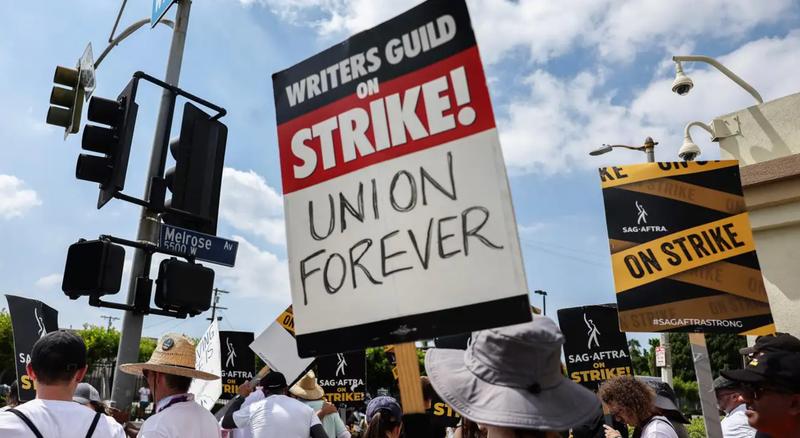
By io9 Staff
Beloved Hollywood Genius David Zaslav Admits Writers Were Right 49 Days After Strike Ends
The 2023 Hollywood Strikes Are Officially Over After SAG-AFTRA’s Contract Vote
Tony Gilroy Says the AMPTP Has ‘Almost Nothing in Common But Greed’
SAG-AFTRA Has a Tentative Deal That Could Bring the Hollywood Strike to an End
Studios Keep Actors’ Strike Going by Pushing a Truly Horrifying AI Deal
100 Days Later, SAG-AFTRA Maintains Its Conviction to Strike
Writers Guild Members Have Officially, Resoundingly, Ratified Their New Deal
Disney’s Bob Iger Joins the Camp of Wanting the Strikes to End ‘Quickly’
The Animation Guild’s Contract Negotiations Get Delayed to 2022
100 Days Later, SAG-AFTRA Maintains Its Conviction to Strike
With a Fair Deal in Hand, the Writers Strike Might Be Over [Updated]
College Graduates Support Writers Strike, Boo David Zaslav at Boston Ceremony
The Writers’ Strike’s Star Trek Picket Showed Solidarity Across Generations
Disney CEO Bob Iger Can’t Seem to Find the Right Thing to Say
Hollywood Execs Can’t Stop Picking Fights With Each Other
The CEO of Warner Bros. Discovery Says ‘Love of Working’ Will End the Writers’ Strike
Both Sides Want to Resume SAG-AFTRA Strike Talks but the Clock Keeps Ticking
SAG-AFTRA Is Making Preparations to Strike
The Writers Strike Has the Power and the Determination to Keep Going
Want more io9 news? Check out when to expect the latest Marvel, Star Wars, and Star Trek releases, what’s next for the DC Universe on film and TV, and everything you need to know about the future of Doctor Who.
